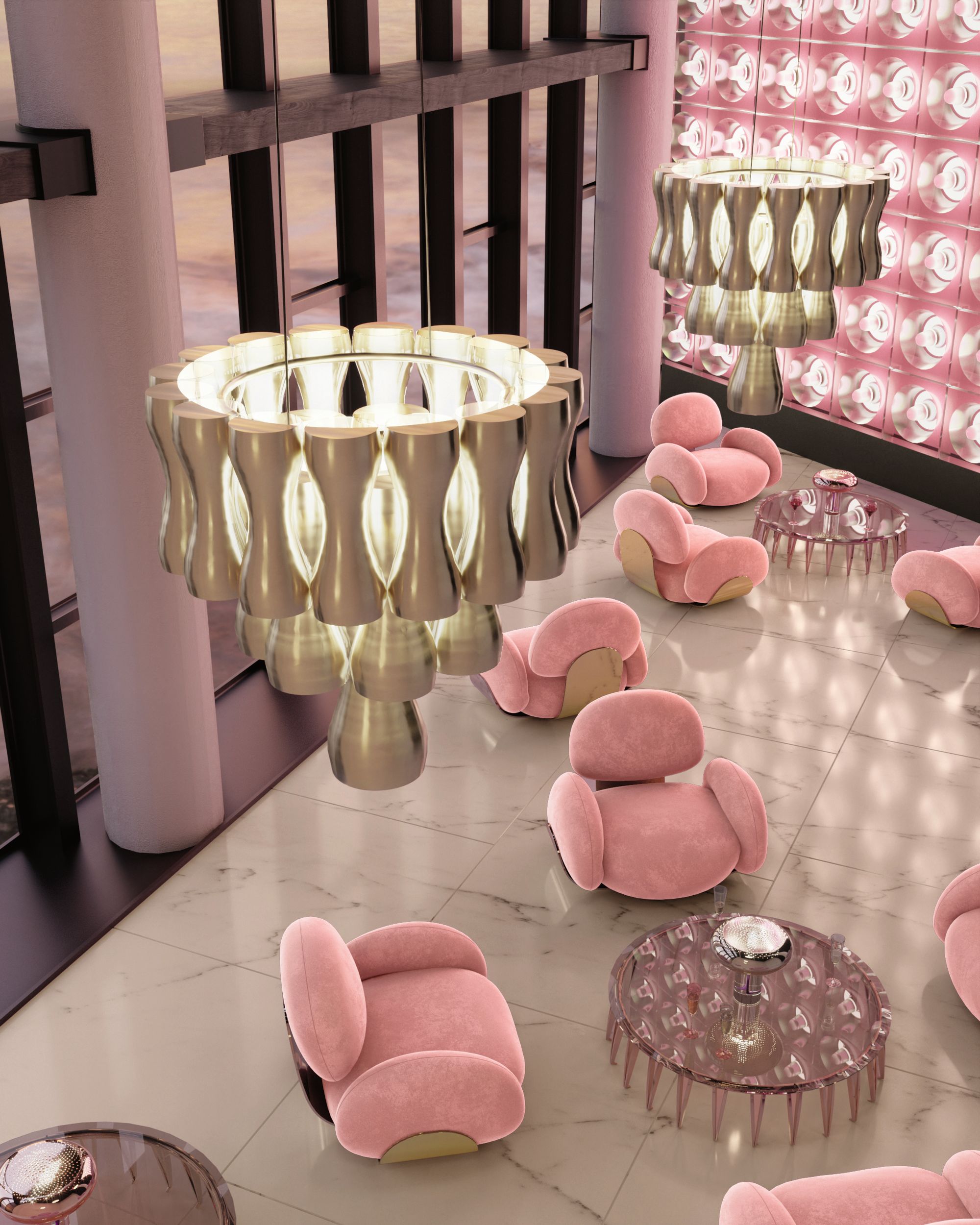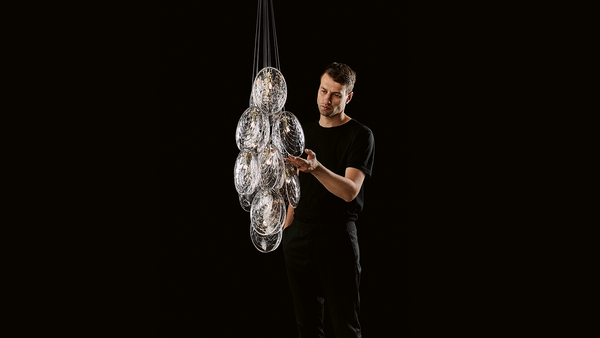„Design is about the betterment of our lives poetically, aesthetically, experientially, sensorially, and emotionally. My real desire is to see people live in the modus of our time, to participate in the contemporary world, and to release themselves from nostalgia, antiquated traditions, old rituals, kitsch and the meaningless.” Karimanifesto
The tireless work of the world-renowned Egyptian-born and Canadian-raised industrial designer makes it impossible to summarise even a segment of it—his objects, spaces and buildings are emblematic all around the world. His philosophy is outlined in the above-quoted Karimanifasto from which, thanks to the invitation of Hello Wood, the Hungarian audience had the luck to have a taste. Rashid was the leading guest at the basalt mine of Zalahaláp—that’s where we had the chance to ask him some questions.
Author: Kitti Kele
This article originally appeared in issue no. 8 of the Hype&Hyper print magazine.

How did you prepare for your talk at the Builder Summit?
Can I be honest? I stopped preparing.
In the last 30 years, I’ve given talks in over 600 cities of the world. In the meantime, I’ve become older, and my mind works in different ways. I’m interested in different things than before. During this period, the world has turned upside down, therefore, I’m trying to share the technological implications of this process with the audience, and how it influences our lives every day. The other element is the venue where I give the talk: I try to get to know it at least to some extent, understand the local cultural, political and social situations. Regardless of the location, my goal is the same: build a discussion about what the people gathered there from the given culture focus their energies on in their lives, their profession and what direction they’d like to progress in.
So you say that despite your routine, a talk is adjusted if you know beforehand that the audience will consist mostly of professionals or people from entirely different domains?
When I’m talking with serious businessmen or tech professionals, then yes, I try to head in different directions and use a different “toolkit” for the presentation. In these cases, there’s less room for intuition, however, it’s also an interesting question because many think that things just come to me without warning—but that’s not how it works. Thoughts travel from our subconscious to our minds, and our subconscious is extremely layered, consisting of our life experiences, our memories and what we’ve learnt. All of these help us out without us even noticing—and among other factors, this is what shapes my relationship with the audience.
What is your personal motivation when accepting an invitation? Is it important for you to resonate well with the projects you say yes to?
I ponder several things, but I’d like to highlight two.
The first is to feel that I’d genuinely be able to take a role in the situation for the long term. I’d like to connect to the life and rhythm of the company, the city or the country in an organic, yet refreshing way with what I can offer and thus inspire and add something to their bloodstream. I believe that a product made this way can grow the region’s “design cultural footprint”. This is a personal, yet professionally-inspired process that fundamentally influences my decision.
The second one might be a bit more selfish, yet it is still tightly connected to the first: I research whether I’ve been to the given place, and if there’s something in the offer that inspires me—I have to admit, there are places I’ve been to two hundred times—it’s not their fault, but I don’t automatically resonate with work coming from a place the two hundred and first time. It simply feels good to travel to a place that I’ve never been to or only a few times. I’ve only been to Budapest twice.


Do you have a ritual that precedes you sitting down at the drawing table?
The first step is a nice, strong coffee—usually a double espresso with oat milk. The second is to play some music, but never something that has lyrics or something that induces memories. I DJ as well, still, a song that transports me back to a certain time in my life can startle me regardless of the process I’m in.
Generally, I listen to anything from jazz to reggae or garage house, but when I sit down to draw, probably electronic ambient is what I enjoy the most—this helps my mind get into the clean abstraction which is needed so that no baggage weighs it down.
Previously, a task of a designer was to solve a problem, however with a mind stuck in the past one cannot fulfil the challenges of modern times: an emancipated, out-of-this-world structure is needed to find honest and humane solutions to the questions that surround us, just like in abstract paintings. Maybe this is why I like abstract pictures so much. I feel that they let me, my imagination “solve” the problem the art of painting had at that moment.
Can we have a concrete example?
For instance, I’m working on the design of a hotel’s interior—I’m taking my personal experiences of how it was entering through the doors of hundreds of hotels, but then I imagine that I enter and navigate through the lobby up to my room—what kind of experience am I looking for during that time? How do I want to feel? These are abstractions based on empirically-obtained experiences, however, the end result is going to be a much more complex entity. My main goal is not to have something that takes a certain shape—I much rather desire to be unique, to produce something that is genuinely one-of-a-kind.
What do you consider unique in this scenario?
The fact that you leave something behind that no one has ever thought of—or maybe thought about it but never realised. Each and every one of us has thoughts and ideas, but where we are different are the opportunities we create to express them. As Heidegger says “to be is to build”—as I understand it, this means we have to produce. You might have great ideas, but if you never realise them, it’s as if they don’t exist.
Being unique is tricky because it means that something happens that was impossible before, and yet now in a nuanced manner, it comes to life in the reality you created.
Your latest project, the recently unveiled ‘196 bench’—a public installation made for the 2023 Suncheonman International Garden Expo, in South Korea can be interpreted as a bridge connecting humanity regardless of gender, race and religion. Do you think a piece like this can induce real discussions?
When I came up with the idea of the bench, my mind revolved around the fact that there are 196 countries in which we, as humans, are inextricably connected, yet, we are so attached to everything that binds and separates us, like a border between countries.
In a sense I’ve been repeating the same thing for over 30 years: we should break free of boundaries whether physical or abstract. Despite being a designer, I often turn into a social politician to spread the message that design does exactly that. A well-made object breaks down the walls between its users and has the ability to help them, broaden their domains of interpretation, and provide them with shared experiences. I simply want to believe—and the human race has to believe—that there is a shared bench that we can all sit on and feel the same emotions, feel something that connects us instead of separating us.
Photos: Alex Ulreich and Karim Rashid Inc
Continue reading H&H issue no.8!
ORDER HERE
World-leading defence technology in Hungary

One day with Beton.Hofi & Miki357 in Budapest










